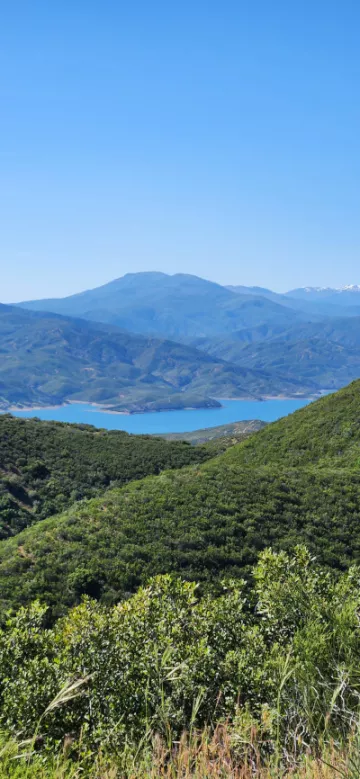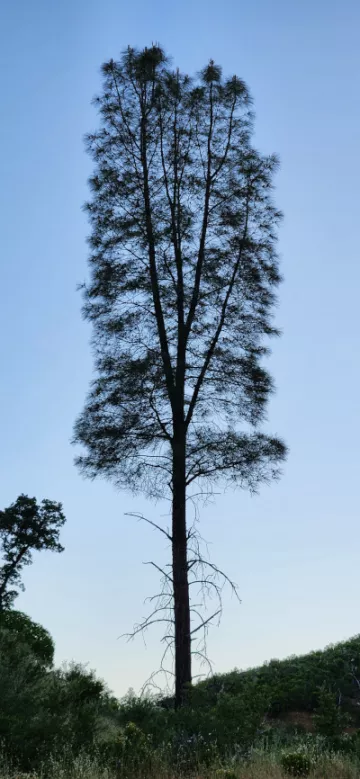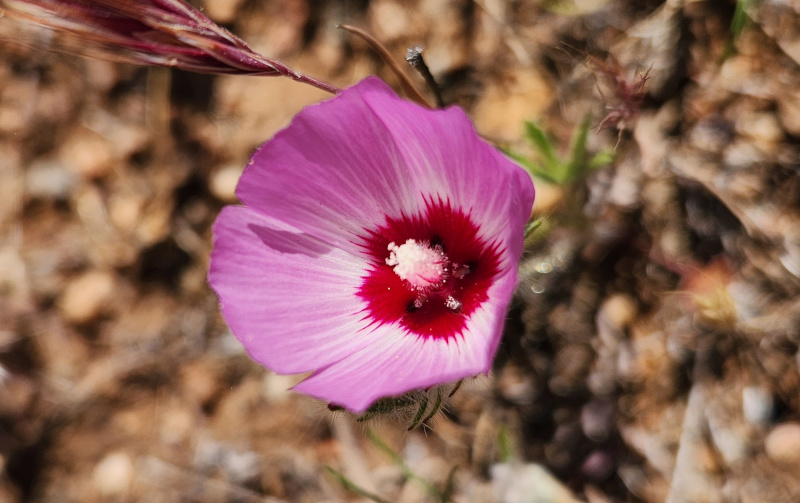Protecting Molok Luyuk or Condor Ridge (Walker Ridge)
Molok Luyuk, or Condor Ridge, is a Yoche Dehe Wintun Nation name for the prominent geographical feature, also known as Walker Ridge, along the eastern boundary between Lake and Colusa Counties, in Central California’s Inner Coast range. Molok Luyuk and surrounding lands, including Indian Valley, were part of the ancestral homeland of the Hill Patwin people.

This vital cultural heritage includes the lands and the cultural practices through which the Hill Patwin lived, including the relationships among the land and the people in the region as well as the specific villages, gathering sites, and burials. Managing the Molok Luyuk region must be viewed through this comprehensive lens.
Condor Ridge is located north of Highway 20 northeast of Clear Lake and is reached by the graveled Walker Ridge Road, which is accessible to cars with high clearance when dry. From the ridge you can see the grand sweep of the Berryessa Snow Mountain National Monument from the Putah Creek gap to Snow Mountain Wilderness and all the view from Mt Konocti to the Sierra Nevada crest to the east.
The Fight for Condor Ridge
One would think that this special place is already protected. It is not. Four separate wind development projects have been proposed and now a fifth threatens Condor Ridge. The ecological damage would be huge and wind energy gain marginal at best, according to maps from the California Energy Commission. (See WOW April ‘21)
We are pleased that fighting to protect Condor Ridge we now have a strong coalition of organizations that includes the Sierra Club, California Native Plant Society, Tuleyome, California Wilderness Coalition, the Yoche Dehe Wintun Nation, Great Old Broads for Wilderness and others. The coalition is working with Congressman John Garamendi (D-CA3) and hopes to get Condor Ridge added to the present Berryessa Snow Mountain National Monument (BSMNM).
Recent Successes
1. Tribal Nations have engaged in this fight. They have told us their name for Walker Ridge is Molok Luyuk, or Condor Ridge. Condors once soared here, and they will return. Condors were recently seen at nearby Mt Diablo, just a day’s flight away.
2. Congressman Garamendi has released a public discussion draft of the Berryessa Snow Mountain National Monument Expansion Act, which he plans to introduce in Congress soon. This federal legislation will permanently protect more than 3,900 acres of Condor Ridge in Lake County and is one of the Sierra Club’s 30 by 30 goals of the Mother Lode Chapter.
3. The Bureau of Land Management has recently undertaken an analysis of Lands with Wilderness Characteristics. We have not yet seen their report. But based upon our personal knowledge and the California Wilderness Coalition’s survey of potential wilderness areas, the west side of Condor Ridge meets the criteria for wilderness. We will fight for that future designation.
4. The Yoche Dehe Wintun Nation has requested (in their comment letter to Congressman Garamendi on the draft legislation) that Walker Ridge be renamed to Molok Luyuk, Condor Ridge. The Nation has also requested comanagement of the BSMNM, which is in accord with President Biden’s recent announcement that the U.S. Departments of the Interior and Agriculture have created the “Tribal Homelands Initiative.” This collaborative effort will improve federal stewardship of public lands, waters, and wildlife by strengthening the role of Tribal communities in land management.
5. Condor Ridge provides an accessible location from which to see much of the National Monument. We have proposed to the BLM that the a site on the Ridge be developed as an ADA accessible site with parking, a boardwalk, viewing platform and interpretive kiosk. It is an ideal place for inclusion and for many to feel and experience this wild place.

Background
Condor Ridge is a product of plate tectonics. The Coast Range and Stony Creek thrust faults subducted the Farallon Plate and then the Pacific Plate under the Sierra Nevada Microplate and the North American Plate, and in this process uplifted and faulted Condor Ridge. Now the Bartlett Springs and the Indian Valley transform faults cut through the ridge. Condor Ridge now largely consists of the Great Valley Group, the eastern belt of Franciscan, and serpentinite. A large sheet of the Wilber Springs serpentinite covers much of the ridge. As you drive the ridge road you see this deep geologic history of how the continents and this place formed.
Fire is a natural ecological process in fire-adapted landscapes like Condor Ridge. While it can be hard to view right after a large fire like the Pawnee Fire at the south end of the ridge or the Ranch Fire at the north end, it is not long before new signs of growth are seen.
Condor Ridge is renowned for its biological diversity resulting from an overlapping of the Klamath Siskiyou and the San Francisco Bay Area ecozones; and the many endemic plants that grow on serpentine soils. There is also a wildlife corridor north to south for mountain lion, bear, and migratory birds including bald eagles.
The California Native Plant Society has twice petitioned the Bureau of Land Management to designate all of Condor Ridge as an Area of Critical Environmental Concern. There has been no response from the BLM.
This campaign began with many partners battling an ill-conceived industrial-scale wind development project, and we find we are now working to support Tribal efforts to repatriate condors to Condor Ridge. I am particularly happy to have the BSMNM be at the leading edge to incorporate Tribal lore and love for the land directly into management of the region.

What You Can Do
- Go to the California Native Plant Society web page (https://www.cnps.org/) and learn more about Condor Ridge. Join the petition to permanently protect this special place.
- Contact Bob Schneider for further information, including how you can donate to the Sierra Club Yolano Group or the Redwood Chapter to help the campaign to add Condor Ridge to the BSMNM.